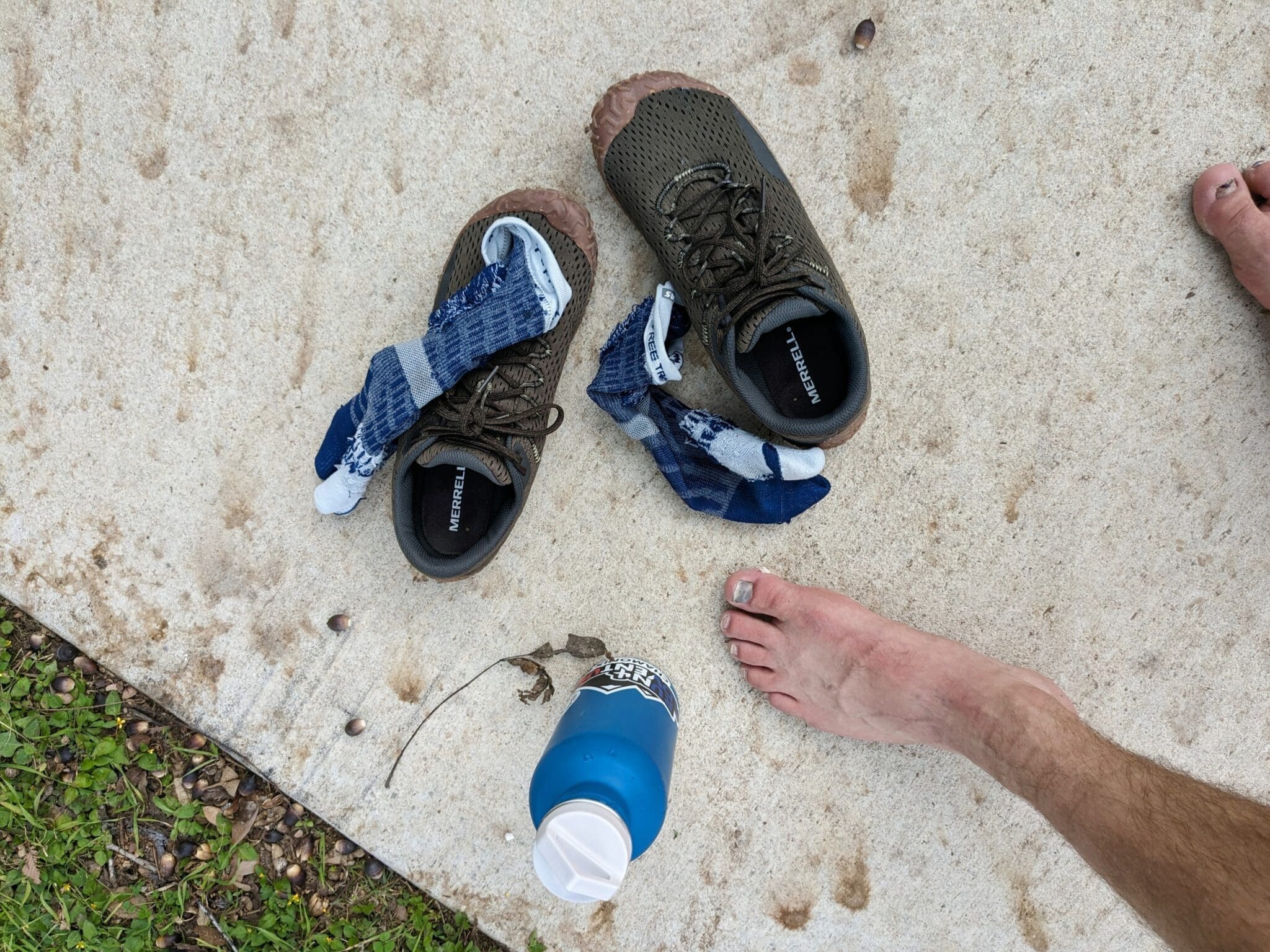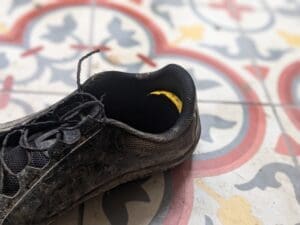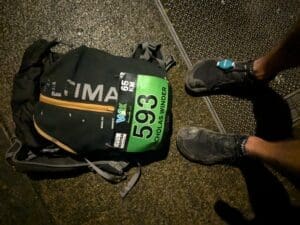Disclaimer: I’m just Nick, writing on the internet because I’m passionate about running. But that doesn’t mean you should take my word as gospel. Always seek medical advice when changing anything drastically in your life. This post should not be taken as medical advice.
Recently, I’ve been thinking to myself, why is there such an aversion to barefoot running?
Barefoot running is just another form of strength and endurance training with the potential to improve running performance and ability with little change in everyday life.
It’s even been shown that people who underwent a barefoot strengthening plan were 2.4 times less likely to pick up a running-related injury.
So why wouldn’t you want to adopt barefoot running? At least, that’s my thinking anyways.
In this blog post, I want to talk about all of this and more –plus, I’ll tell you how to avoid common barefoot pitfalls and why the shoe industry has tried to scare everyone away from using barefoot options (hint: it’s all about their bottom line).
The biggest reason is fear. And most of that is down to the teachings of the shoe industry.
There’s a big industry out there that attempts to sell bigger and better models every year, and without the “latest advancements,” how would they keep increasing that bottom line?
Don’t get me wrong, I believe some of the “advancements” have validity in certain use cases.
But that’s my exact argument with barefoot running! It has validity in some use cases, too!
So, what are those use cases?
- Short speed-focused workouts where you’re looking to overload the system on purpose.
- Longer, slower form-focused runs where repetitive actions are burned into muscle memory.
But why would we want to focus on those use cases?
- As with almost any body part, strengthening the lower legs and feet can help increase performance and reduce injury risk.
- Working on muscle memory helps improve our form, even when not wearing barefoot shoes.
There must be a drawback to minimal running because not everything is risk-free, right?
Here’s where the problem lies.
Running barefoot/minimal can cause injuries, too! But it should be obvious to see why.
After using conventional shoes for most of your life, you become habituated to the movement pattern forced upon you by cushioning and shoe structure.
Now, when you move into barefoot shoes, it’s an entirely different movement pattern your body and brain are not used to and perform sub-optimally.
When you increase the frequency of any movement pattern you’re suboptimal in, whether lifting weights, riding a bike, skiing, or running barefoot, there’s an increased risk of injury due to weaknesses in those in-demand areas.
The simple answer is to ramp up slowly.
First of all, start going barefoot around the house.
Then, you progress to some short barefoot/minimal walks outside.
And only then should you think about running barefoot, but not far. Start with 5 minutes and work up.
How long should each of those steps take?
It can take up to 6 months to fully transition to barefoot running. And I know that sounds like a long time, but it’s the safest option.
- Barefoot around the house and walking in minimal shoes – 8 weeks
- Learning to run barefoot – 6 weeks
- Maximizing barefoot running – 8 weeks
All these timings are rough, but there’s some thought and research behind those timings.
At the start, your feet are likely weakened, which puts you at a much higher risk of injury.
It’s even been shown in studies that ½ of participants new to barefoot running had bone damage after 10 weeks. And we need to avoid that!
If we build up slowly, we can allow time for the bone to repair and eventually strengthen. And this is true for any impact-based movement, even when you first start running, no matter what shoes you wear!
Progress slowly to allow time for the body to repair and come back stronger
Only then can we think about the performance gains of the muscles, tendons, and ligaments.
After reading this quick post, I’m hoping I’ve swayed you toward my thinking of barefoot as a tool to advance your everyday running.
And hopefully, you now have the knowledge (and research!) to understand why we build up to barefoot running slowly.
If you want to take the fast path toward a training plan that guarantees you’re barefoot running in 6 months, look no further.
I’ve designed Your Barefoot Journey to take you from 0 to 5km of barefoot running with each week laid out so you have no doubt what to focus on every step of the way.
Best of all, you can request your money back if you’re unhappy or don’t reach the 30-minute barefoot running goal at the end of the 6 months. No questions asked.
Click the button below to find out more!



